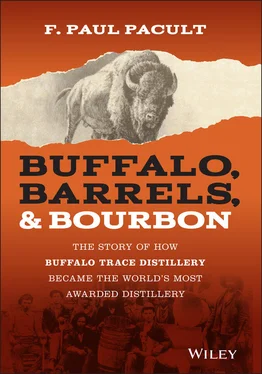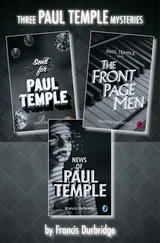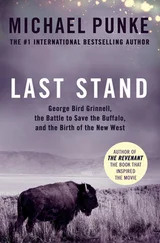On December 27, 1775, Hancock Lee III registered a number of parceled claims in Fincastle County, Virginia, totaling 2,800 acres, with 1,200 acres relating specifically to Leestown. One parcel of 400 acres was described by Lee as being at the “Great Buffalow crossing on Cedar Creek.” Additional claims by Willis and Richard Lee, most adjoining Leestown, secured a significant area of land. In all, the Lees claimed 8,800 acres, the majority in and around Leestown, and smaller plots near Elkhorn Creek.
But, regrettably, the euphoria of the brothers' companion George Rogers Clark and the Lees' own ambitions concerning Leestown collided head-on with the sobering realities of wilderness habitation in northern Kentucky in the last quarter of the eighteenth century. The region's struggling remaining native tribes, specifically the Shawnees and their Iroquois-speaking allies, the Mingos, shared neither the joy nor the optimism of the Lees and their party. Tribal leaders viewed the establishment of Leestown and the other meager compounds in the Bluegrass as aggressive encroachments on their traditional hunting grounds. The founding of populated compounds and deforested fields by the colonials disturbed and reduced the numbers of the game animals. Worse still, the callous murder of a local tribal chief's family members by a throng of Euro-American settlers in 1774 as well as a string of broken treaties with the British likewise fanned the flames of vengeance. Also in 1774, the Battle of Point Pleasant, pitting Virginia Colony militias against the warriors of the Shawnee and Mingo tribes in what is now West Virginia, ended badly for the Shawnees and Mingos. After the fight, the tribes agreed to relinquish their rights to all lands west of the North Carolina and Virginia colonies. This included all of the District of Kentucky.
Thus, amidst the festering rancor between the native tribes and the Euro-Americans, in April of 1776 catastrophe struck when a band of Mingo warriors waded across the great buffalo trace armed with tomahawks and bows and arrows, and rifles and attacked Leestown. In the hand-to-hand skirmish Willis Lee was killed and resident Cyrus McCracken was badly wounded. The few crude log cabins and storage sheds were set ablaze. Leaving their bulky possessions and the incapacitated Willis Lee behind, the handful of ambulatory settlers fled Leestown, scrambling their way through miles of dense forest and across open pasture to the relative safety of Boonesborough. Some historians have viewed the shooting of Hancock Taylor that occurred two years earlier in the same light of tribal retribution. Whatever the case, with shocking abruptness, any sense of secure occupancy at the river landing christened Leestown was shattered. Even though this single attack could hardly be characterized as a major battle when compared to other confrontations, the ferocity and swiftness of its nature became the topic of conversation that planting season at every campfire and fortified homestead in the Bluegrass. Consequently, the Shawnee and Mingo tribes were demonized, making them the targets of the subsequent wrath of the Euro-American settlers.
From the mid-1770s to the early 1780s, the severity and number of the hostilities between settlers and the agitated native tribes made passage throughout the Bluegrass untenable. Blood-curdling tales of the horrendous tortures, including being burned or skinned alive or of having ears, noses, and limbs severed, suffered by the unfortunate pioneers who were captured by tribal war parties dominated the conversations within the settlements. To make matters worse, with the Revolutionary War raging at an all-hands-on-deck degree all along the eastern seaboard, no militias could be roused to help defend the western frontier against the stealthy sorties of the native warriors.
Indeed, many pioneers, including Hancock Lee, who served in one of the nine companies of troops of the 13th Virginia Regiment, returned to the eastern colonies to fight the British, a move that further depleted the manpower of the western frontier settlements. Consequently, Fincastle County's four vulnerable and lightly armed communities – Leestown, Boonesborough, St. Asaphs, and Harrodsburg – were left to fend for themselves until the end of the Revolutionary War. In their book A New History of Kentucky , authors Lowell H. Harrison and James C. Klotter write, “By late spring 1776 the pioneer population of Kentucky was estimated to be no more than 200, and most of these people were in forts … By early 1778 Kentucky had by one count only 121 able-bodied riflemen … in a total population of about 280. ” 11 Following the 1776 raid and with Hancock Lee's departure to serve in the war, Leestown was likely abandoned throughout the duration of the war. Yet even in the wake of the 1776 assault by the Mingo warriors and the lack of population, Leestown remained on the county register for its strategic commercial potential as a suitable future river landing. The local Land Court, for example, notes its existence in 1779–1780 when no one may have been in residence at the great buffalo trace.
By the autumn of 1781, the Revolutionary War started to wind down as the battlefield tide turned against the crumbling and cash-poor British war machine. The surrender of General Charles Cornwallis to General George Washington at Yorktown in October 1781 proved to be the first toppling domino. Twenty-three months later, in September of 1783, the war officially concluded with the signing of the Treaty of Paris. Continental Army veterans and militia members alike began returning to the Bluegrass to reclaim their homesteads and resume their agrarian livelihoods. Hancock Lee traveled back to revive Leestown, and he wasted no time in making progress.
In 1783, legislation in the Virginia General Assembly allowed Hancock Lee to build a warehouse, declaring, “… the erection of a warehouse for the inspection of tobacco, in the county of Fayette [formerly Fincastle], at Leestown, on the Kentucky River, on the lands of Hancock Lee, will be of public benefit …” 12 Whether Lee's actual warehouse was ever erected that year at the great buffalo trace even with the blessing of the Virginia General Assembly remains unclear. A previous log structure, referred to as a “blockhouse,” was erected sometime after the Mingo raid of 1776 more as a means of defense than of stock storage. Later county records do prove beyond the shadow of a doubt, however, that warehouses were built in time as Leestown's prime low-bank location served it well as a commercial depot on the bustling Kentucky River in the late eighteenth and early nineteenth centuries. Hancock Lee, meanwhile, was the recipient of good news about three years after his return from the war. He was bestowed clear title in 1786 to the land claims that he had inherited from his cousin Hancock Taylor and his brother Willis after their tragic murders. This legal action solidified Hancock's control of the plot on which Leestown was built.
But even with such an advantageous position on the bank of a major tributary of the Ohio River, Leestown stayed little more than a modest municipality, dotted with a few cabins and small warehouses made of logs. Its positional strength was as a serviceable river landing, but not necessarily as a desirable residential location. The ravages of the war in the east altered the directions of peoples' lives in the west. George Rogers Clark, Lee's deputy surveyor, for example, never returned to Leestown despite his earlier declarations, later settling in what would become the state of Ohio after leading troops in the violent Indian Wars (1775–1783). Leestown's population thus remained small while other nearby communities grew.
Then later in 1786, a blustery tornado twisted and corkscrewed its way through the Bluegrass. That storm had a name. General James Wilkinson. And with Wilkinson's appearance, life in Leestown would be forever changed.
Читать дальше












